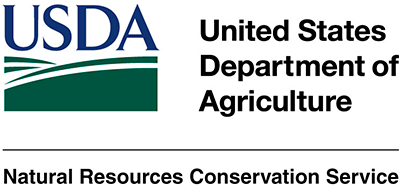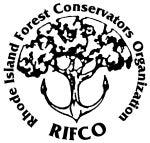Working For Forest Resources and Health
As living organisms, trees are susceptible to damage from a number of different factors. Non-native insects and diseases top the list in terms of causing abrupt damage, but factors like lack of sunlight, nutrients, and space can heighten the susceptibility of trees to insects and disease over time. Forests provide us with clean air and water, wildlife habitat, privacy, income, and much more, making it important to monitor for symptoms of poor health. You can do this yourself by looking for widespread sudden loss of leaves, open wounds or cracks, or mushroom shelves. A forester will thoroughly assess these factors if hired to manage your woodland.
Non-native insects cause enormous damage to trees in Rhode Island. In 2016, the Department of Environmental Management estimated that 200,000 acres of forest, approximately half of Rhode Island’s forests, suffered severe defoliation from gypsy moths. To view an interactive map of the 2016 defoliation, click here.
In 2001, 3,000 acres of forest were defoliated by winter moth, a species that has spread throughout the state. Orange striped oak-worm contributed to another 1,200 acres of defoliation in the same year. Other non-native insects, such as Asian long-horned beetle and Emerald Ash Borer, are potential threats to Rhode Island’s trees as these species spread throughout New England. Non-native invasive plants can also out-compete native species, causing imbalances in the forest. See Invasive Species for more information.
Many native insects and diseases also threaten Southern New England, most notably the Forest Tent Caterpillar, which has caused both defoliation and mortality of oaks in Rhode Island. Factors that affect tree stress, such as water, light, and nutrients, can make trees more or less susceptible to an attack. Tree threats also go through cycles of population booms and busts, making it difficult to anticipate an outbreak.
For information about specific threats, see the fact sheets below.
- American chestnut blight
- Asian long-horned beetle
- Beech leaf disease
- Beech bark disease
- Birch leaf miner
- Butternut canker
- Cankerworms
- Cicadas
- Dogwood anthracnose
- Dutch elm disease
- Eastern Tent Caterpillar
- Elongate Hemlock Scale
- Emerald Ash borer
- Fall webworm
- Forest Tent Caterpillar
- Gypsy moth
- Hemlock woolly adelgid
- Orange striped oakworm
- Sirex woodwasp
- Winter moth
You can also find more information about forest pests and diseases in the following documents or websites.






